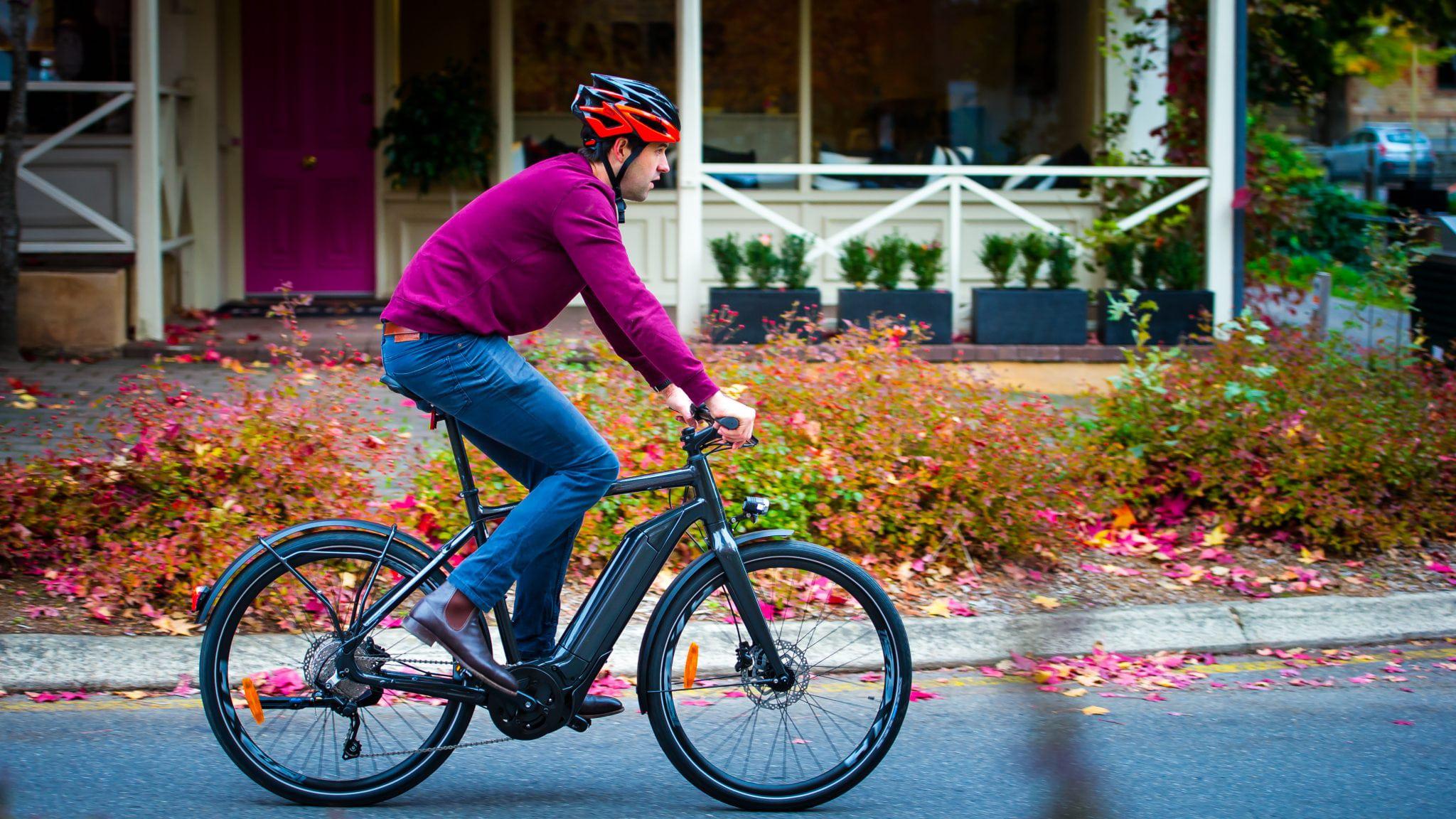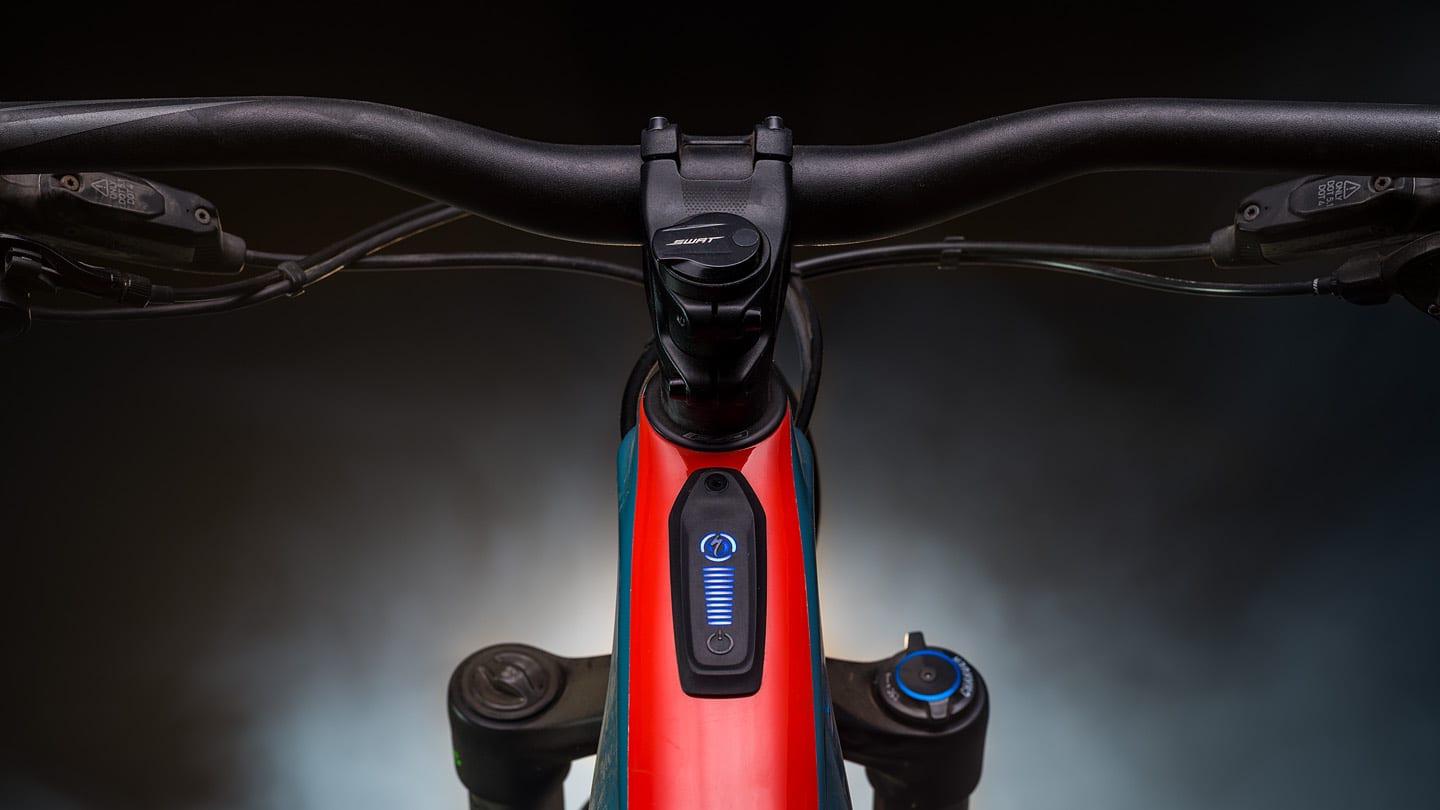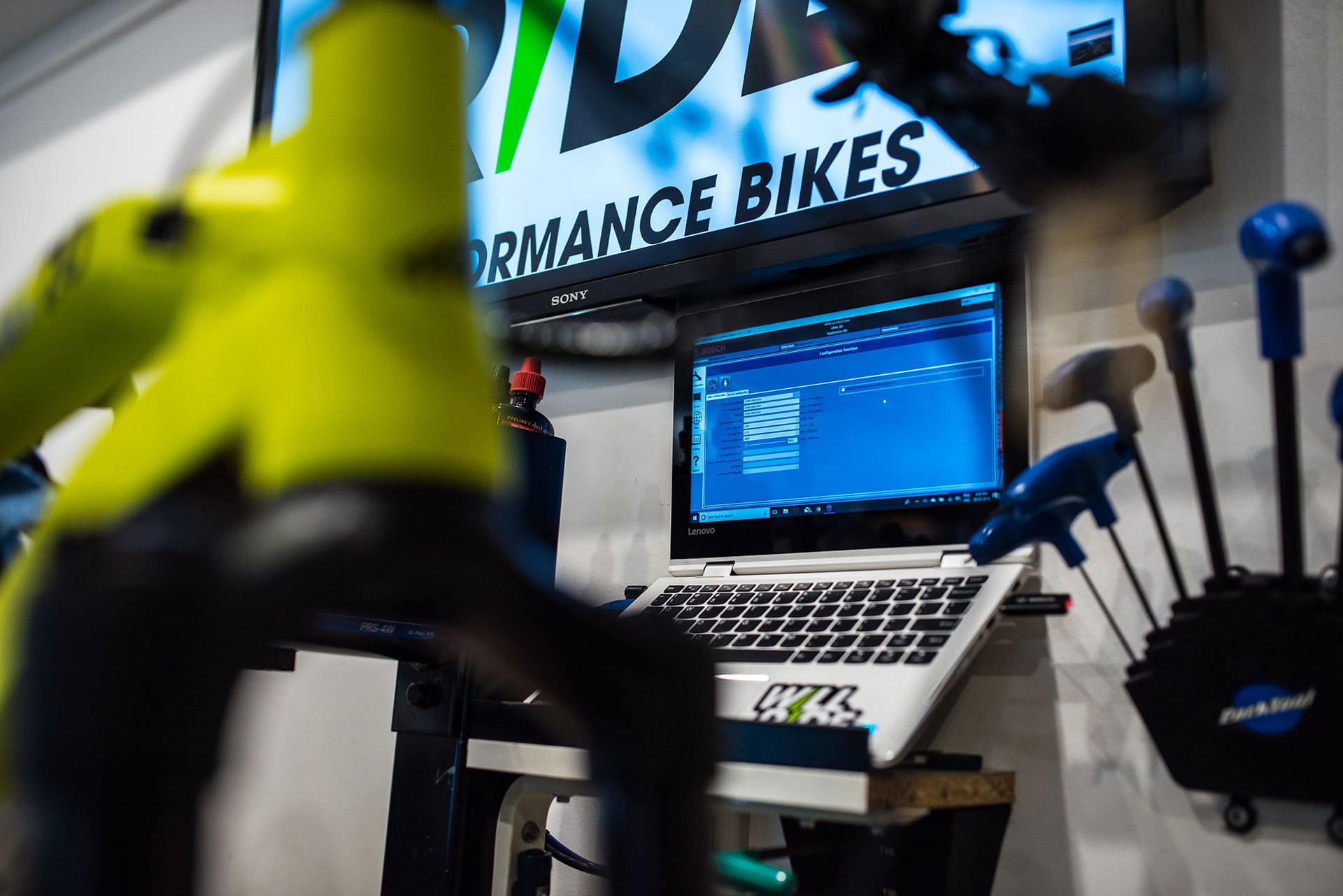The battery is one of the most important parts of an E-Bike and is quite the mystery to those curious about the new electrically-charged world.
We’ve laid out some background on what you need to know about capacity, runtime, internal and external batteries, how the brands compare, and how to take care of your battery.
As always, we are full equipped to service, and give you advice about how to live with your new battery.
Capacity and run time
E-Bike battery capacity is measured in watt hours (Wh). The majority of E-Bike batteries hold between 300 and 700 Wh. The fastest battery drain time can be roughly calculated by dividing the Wh in the battery by the maximum power the motor is capable of. So a 250 watt motor will drain a 500 Wh battery in about 2 hours.
It’s not an exact calculation because the power output will reduce as the battery gets closer to being empty but it’s a good rough guide.
Of course, nobody uses their E-Bike at full power constantly until the battery drains so the real-world battery life is much longer than the theoretical minimum.
Run times will be affected by all of these factors too:
- Rider weight
- Terrain
- Climbing
- Mode used
- Tyres.
Most people commuting around urban areas will get days of running from their battery. E-Bike motors are programmed to stop giving power at 25 km/h so you’re only using it to accelerate to that speed or maintain it while pedalling. That’s why E-Bikes are such energy efficient transport. They work with you to reach your destination.

Internal and external batteries
E-Bikes come with either internal or external batteries. What type your E-Bike has can affect maintenance, aesthetics, weight distribution, and ease of use.
External batteries sit outside the bike’s tubes and are usually released by a locking mechanism. They have the benefit of being easy to charge, and easy to maintain. They can get dirtier than internal batteries because they’re more exposed to the elements. You could say they’re a little less aesthetically pleasing than internal batteries, but that’s really up to you! Bosch, Brose, Shimano, and Yamaha all make external battery systems.
Internal batteries live inside one of the bike’s tubes. They tend to be compact and sit lower in the frame which drops the bike’s centre of gravity. A lot of people love how internal batteries look. Rocky Mountain and Specialized make particularly svelte looking systems, and their bikes look the closest to regular MTBs. The main disadvantage to internal batteries is convenience. There’s a few extra steps to get the battery out for maintenance.

Brand comparison
There’s a big range of weights and battery capacities. We don’t recommend worrying too much about weight because you won’t notice it when the motor is working.
Here’s a list of approximate battery weight, and capacities:
- Bosch: 2.6 kg, 300-500 Wh options
- Brose: 3.4 kg, 400-770 Wh options
- Rocky Mountain: 2.8 kg, 500-632 Wh options
- Shimano: 2.65 kg, 504 Wh
- Specialized: 2.9 kg, 460-504 Wh
- Yamaha: 3 kg, 500 WH
Longevity and replacement
There’s no escaping that E-Bike batteries are very expensive to replace. The good news is that proper care and maintenance will see them last for tens of thousands of kilometers. You’ll wear through multiple chains, cassettes, many sets of tyres, and have quite a few services before your battery needs replacing.
Depending on the brand, you can expect between 500 and 1000 power cycles from a battery. That’s a lot of riding! Commuter E-Bikes ridden short distances will take a very long time to run through so many cycles and even an e-MTB should take years at a minimum.
Battery longevity is one of the reasons E-Bikes are a great investment. They will last years while you need to replace the cheap parts of the bike that wear out.

Charging
Like most batteries, the first 50% of charging happens quite a lot faster than the last 50%. So it’s easy to give your E-Bike a bit of juice for your next trip to or from work with a little time on charge. Getting to full charge can take up to 6 hours depending on the battery.
Every E-Bike comes with a charger, and we can always hook you up with another if you want one at home and work. Every E-Bike has a display system that will show you how much battery life is left. Some show percentages on a screen – like Bosch, and others have LEDs on the frame – like Specialized.
Running out of battery happens to most E-Bike owners at some point. You’ll just have to huff and puff a bit more to get home to your charger!

Care
Here’s a few tips to make sure your battery lasts as long as possible:
- Keep the battery topped up. Keeping a decent amount of charge will prolong the battery life. Keeping it between 30-60% will
- Don’t pressure wash it. E-Bike batteries and motors don’t like pressure washers but using a bucket and sponge is fine.
- Don’t throw it in a river. You think we’re joking, but many an MTB has been dropped during a river crossing. They will typically survive but an E-Bike probably won’t.
- A light greasing of the contact ports on the battery will keep it in top-top shape. We do this for every bike we service if you don’t want to do it yourself.
- Keep an eye on your E-Bike phone apps. A few of the brands have some great tech to help you take care of your battery.
- Avoid extreme temperatures. We recommend taking your battery off your bike and inside if your shed manages to hit freezing point, or rockets to 50°C in summer. Or you can just roll the whole bike inside if your cohabitors are ok with it! Extreme temperatures can have a negative effect on your battery over time. Take a little extra care when the temperature goes crazy.
Archive
2021
- How to : Master tricky uphill corners
- Are you that guy?
- I think I may have cracked the code!
- Trail bike vs E-Bike : The Test!
February
January
2020
- How to : Tackle tech uphill's on your E-Bike
- How to: Master Wheelies
- The art of hitting uphill flat out
- E-Bike Racing
- The art of hitting uphill sections flat out
- Adelaide's best tracks and trails for E-Bikes